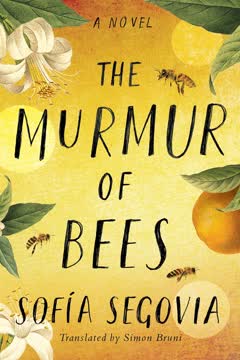Plot Summary
The Bridge and the Bees
On a chilly October morning in 1910, an abandoned infant is discovered beneath a bridge near the Morales family's hacienda in Linares, Mexico. The baby, miraculously alive, is covered in a living blanket of bees, unharmed and protected. The ancient Nana Reja, herself a fixture of the land and family, is the one who finds him, guided by a mysterious intuition. The townspeople, steeped in superstition, whisper that the child is a witch's offspring or marked by the devil, for his face is disfigured by a cleft palate. Yet, the Morales family, led by Francisco and Beatriz, take him in, naming him Simonopio. His arrival, shrouded in magic and rumor, marks the beginning of a new era for the family and the land, as the bees' murmur becomes a constant, protective presence.
Orphaned and Adopted
Simonopio, the bee-child, is raised by the Morales family, growing up under the care of Nana Reja and the household's women. Though unable to speak clearly, he communicates through gestures, his eyes, and the ever-present bees that seem to understand and guide him. The family, especially Beatriz, comes to love him as their own, even as the townsfolk remain wary. Simonopio's difference is both a source of pain and a wellspring of wonder; he is both outsider and beloved. The Morales children, especially young Francisco Junior, form a bond with him that transcends blood. Simonopio's silent wisdom and connection to the natural world set him apart, and his presence becomes a quiet anchor for the family as the world around them grows more uncertain.
The Morales Family's Burden
The Morales family, stewards of vast lands, face the relentless pressures of revolution, shifting politics, and the threat of land reform. Francisco shoulders the burden of protecting his family's legacy, navigating the dangers of war, banditry, and government expropriation. Beatriz, practical and resilient, manages the household and social obligations, striving to maintain normalcy for her children. The family's fortunes wax and wane with the seasons and the tides of history. The land itself is both a source of pride and a heavy yoke, demanding constant vigilance and sacrifice. Through it all, Simonopio's presence is a quiet reassurance, his bees a symbol of the fragile harmony between people and the earth.
Simonopio's Gift
Simonopio's connection to the bees is more than companionship—it is a gift. He senses things others cannot: the coming of storms, the approach of danger, the subtle shifts in the land. The bees whisper to him, and through them, he glimpses possible futures. When the Spanish flu pandemic approaches, it is Simonopio's sudden, inexplicable fever that keeps the Morales family from attending a deadly wake, saving them from the fate that befalls much of the town. His visions are both a blessing and a burden, isolating him further but also granting him a purpose. The family comes to trust his instincts, even as they struggle to understand the source of his knowledge.
War, Land, and Loss
The Mexican Revolution and its aftermath bring violence, uncertainty, and loss to Linares. The Morales family loses crops, friends, and even relatives to the chaos. Beatriz's father is executed, and the family is forced into exile to escape the flu and the violence. The land, once a symbol of stability, becomes a battleground—both literally and figuratively. Francisco's efforts to protect his holdings grow desperate as agrarian reform threatens to strip them of everything. The family's unity is tested, and grief becomes a constant companion. Through it all, the cycles of planting and harvest continue, echoing the persistence of life amid upheaval.
The Plague Arrives
In 1918, the Spanish flu sweeps through Linares, leaving death and despair in its wake. The town is transformed into a place of mourning, with bodies piling up faster than they can be buried. The Morales family, isolated on their hacienda thanks to Simonopio's timely illness, is spared the worst, but the trauma of loss and survival lingers. The community is forever changed, its fabric torn by the sudden absence of so many. The story of Lázaro, the man who returns from the mass grave, becomes a local legend—a symbol of hope and the thin line between life and death. The bees, too, are affected, their numbers dwindling as the world sickens.
The Miracle and the Mass Grave
The supposed resurrection of Lázaro brings a brief, desperate hope to the town, but the truth is more mundane: he was never truly dead, only mistaken for so in the chaos. The episode exposes the limits of faith and the hunger for miracles in a time of suffering. Dr. Cantú, the town's weary physician, is forced to confront his own helplessness and the inadequacy of science and religion alike. The Morales family, meanwhile, clings to each other and to the routines that have sustained them. The bees' murmur is a reminder that life, though fragile, endures.
The Fever That Saved
Simonopio's mysterious fever, which strikes just as the flu arrives in Linares, keeps the Morales family from attending a wake that becomes a super-spreader event. His illness, inexplicable and alarming, is treated with folk remedies and the unwavering care of Nana Reja and Beatriz. When he recovers, the family realizes that his sickness was a blessing in disguise—a shield against the invisible enemy ravaging the town. The episode cements Simonopio's role as both protector and enigma, deepening the family's gratitude and their sense of the uncanny forces at work in their lives.
Exile and Return
The family's self-imposed exile at their secondary hacienda, La Florida, is a time of both hardship and healing. Cut off from the world, they confront their grief, their fears, and the changing dynamics within the family. Beatriz finds solace in her sewing machine, Francisco in the land, and the children in each other. When the epidemic subsides, they return to a town transformed by loss. The gaps left by the dead are everywhere, and the process of rebuilding is slow and painful. Yet, the return also brings hope—a chance to plant new seeds, both literal and metaphorical.
The Orange Blossom Future
Inspired by Simonopio's gift of orange blossoms, Francisco decides to transform the family's future by planting orange orchards. The decision is both practical and symbolic—a break from the past and a bet on renewal. The orange trees, nurtured by the family and the bees, become a source of prosperity and a living legacy. The shift is not without resistance, but it marks a turning point: the land, once threatened by reform and neglect, is reborn. The bees thrive, and the family's fortunes begin to recover. The scent of orange blossoms becomes a new murmur, promising sweetness after so much bitterness.
The Coyote's Grudge
Anselmo Espiricueta, a resentful peon with a history of hardship, becomes the embodiment of the land's darker forces. Nursing old wounds and a sense of injustice, he fixates on Simonopio as a source of misfortune and on the Morales family as oppressors. His envy festers into hatred, and he becomes a lurking threat—a coyote stalking the lion. The tension between him and Simonopio is a slow-burning fuse, their fates intertwined by the land they both claim. Espiricueta's bitterness is a reminder of the costs of inequality and the dangers of unhealed wounds.
The Day of Blood
On a fateful day, as Francisco and his young son plant orange trees together, Espiricueta ambushes them, driven by rage and a sense of destiny. He shoots Francisco, killing him, and turns on the boy. Simonopio, sensing the danger through the bees' urgent call, races to the scene but arrives too late to save Francisco. In a final act of vengeance and protection, the bees swarm Espiricueta and his son, killing them both. Simonopio rescues the wounded boy, carrying him to safety. The land is stained with blood, and the cycle of violence claims another generation. The cost of survival is steep, and the scars will last a lifetime.
The Aftermath and Absence
The Morales family is shattered by Francisco's death and Francisco Junior's near-fatal injuries. Beatriz, paralyzed by grief and guilt, struggles to hold the family together. The hacienda, once a place of life and laughter, becomes a mausoleum of memories. The bees, decimated by their sacrifice, leave Simonopio bereft. The land, though saved from expropriation, feels empty. The family's future in Linares is uncertain, and the ties that bound them to the place begin to fray. The absence of Simonopio, who withdraws into himself, is keenly felt by all, especially the boy he saved.
The Long Goodbye
Unable to bear the weight of loss and the threat of further violence, Beatriz decides to move the family to Monterrey, leaving behind the land and the ghosts of Linares. Simonopio, bound to the bees and the land, cannot follow. The parting between him and Francisco Junior is wordless and wrenching—a wound that will never fully heal. The boy grows up, haunted by the memory of his brother in spirit, and the murmur of bees becomes a distant echo. The house, the orchards, and the stories fade into the past, but the longing for reunion endures. In old age, Francisco returns to the ruins of his childhood home, seeking closure and the hope of one last meeting with the one who saved him.
The Murmur Endures
In the twilight of his life, Francisco reflects on the meaning of his story—the losses, the loves, the betrayals, and the miracles. He understands at last the sacrifices made for him, the debts owed to the land and to those who loved him. The murmur of bees, once a sound of comfort and mystery, becomes a symbol of endurance and connection across time. As he nears death, Francisco feels the presence of Simonopio and the bees, guiding him home. The story ends where it began: with a bridge, a murmur, and the promise that love and memory outlast even the greatest sorrows.
Characters
Simonopio
Simonopio is the enigmatic, bee-covered foundling whose arrival transforms the Morales family. Marked by a cleft palate and unable to speak clearly, he communicates through his eyes, gestures, and the bees that swarm around him. His connection to the natural world is mystical—he senses danger, foresees calamity, and acts as a silent protector. Psychologically, Simonopio is both isolated and deeply empathetic, carrying the weight of being different while finding purpose in his gift. His relationship with Francisco Junior is that of a brother and guardian, and his bond with Nana Reja and the bees is spiritual. Over time, Simonopio's journey is one of sacrifice, belonging, and ultimately, letting go.
Francisco Morales
Francisco is the head of the Morales family, a man shaped by tradition, responsibility, and the relentless demands of the land. He is pragmatic, loving, and sometimes stern, carrying the burdens of war, reform, and family legacy. His relationship with Beatriz is one of partnership and mutual respect, though tested by grief and hardship. As a father, he is both nurturing and demanding, striving to prepare his children for a changing world. His psychological arc is marked by resilience, hope, and, ultimately, tragic sacrifice—his death is both a personal and symbolic loss for the family.
Beatriz Cortés de Morales
Beatriz is the heart of the family, balancing the roles of wife, mother, and social leader. She is practical, intelligent, and fiercely protective, yet haunted by loss and the weight of unfulfilled promises. Her psychoanalysis reveals a woman torn between tradition and change, struggling to adapt to a world that keeps taking from her. Her relationship with Simonopio evolves from skepticism to deep affection, and her bond with her children is both nurturing and fraught. Beatriz's journey is one of endurance, adaptation, and the search for hope amid devastation.
Francisco Junior
Francisco Junior, the youngest Morales child, is both witness and participant in the family's joys and tragedies. His bond with Simonopio is central—a relationship of brotherhood, dependence, and eventual separation. As a child, he is curious, stubborn, and sensitive, shaped by the traumas of violence and loss. Psychologically, he carries the scars of his father's death and Simonopio's departure, struggling with guilt, longing, and the challenge of forging his own identity. In old age, he becomes the story's narrator, seeking reconciliation with his past and the hope of reunion.
Nana Reja
Nana Reja is the family's wet nurse and spiritual anchor, a woman so old she seems part of the land itself. She is silent, immovable, and wise, her presence a link to the past and to the mysteries of life and death. Her relationship with Simonopio is maternal and mystical—she is the first to accept and protect him. Psychologically, she embodies acceptance, patience, and the quiet strength of those who endure. Her eventual departure with Simonopio marks the end of an era.
Anselmo Espiricueta
Espiricueta is the story's antagonist, a man shaped by poverty, humiliation, and a burning sense of injustice. His envy of the Morales family and hatred of Simonopio fester over decades, culminating in betrayal and murder. Psychologically, he is consumed by bitterness, unable to escape the cycle of victimhood and vengeance. His relationship with his own family is marked by loss and abuse, and his actions are both personal and symbolic—a manifestation of the land's dark side and the dangers of unhealed wounds.
The Bees
The bees are more than insects—they are a living symbol of community, resilience, and the mysterious forces that shape fate. They communicate with Simonopio, warn of danger, and ultimately sacrifice themselves to save the family. Psychologically, they represent the interconnectedness of all things, the persistence of life, and the power of collective action. Their murmur is both comfort and warning, a thread that ties the story's events together.
Carmen and Consuelo
Carmen and Consuelo, the Morales daughters, embody the hopes and anxieties of a generation caught between old and new worlds. Carmen is gentle and romantic, Consuelo fiery and independent. Their relationships with their parents, Simonopio, and each other are complex—marked by rivalry, affection, and the pressures of tradition. Psychologically, they struggle with the expectations placed upon them and the traumas that shape their family. Their eventual marriages and departures mirror the family's broader journey of loss and renewal.
Dr. Cantú
Dr. Cantú is the town's weary doctor, a man of science confronted by the limits of his knowledge during the flu epidemic. He is compassionate, rational, and sometimes cynical, serving as both healer and witness to the community's pain. His relationship with the Morales family is one of respect and shared struggle. Psychologically, he grapples with helplessness, the search for meaning, and the challenge of maintaining hope in the face of overwhelming loss.
The Land
The land itself is a character—fertile, contested, and ever-changing. It is the source of the family's wealth and the stage for their struggles. Psychologically, it represents both home and battleground, a place of memory, identity, and unending labor. The land's fate is tied to the family's, and its transformation from sugarcane to oranges mirrors the cycles of death and renewal that define the story.
Plot Devices
Magical Realism and the Murmur of Bees
The novel employs magical realism to weave together the ordinary and the extraordinary. Simonopio's connection to the bees, his visions, and the subtle interventions of fate are presented as natural parts of the world, blurring the line between superstition and reality. The bees' murmur serves as both literal sound and metaphor—a chorus of memory, warning, and hope. The narrative structure alternates between first-person reminiscence and third-person storytelling, creating a sense of intimacy and universality. Foreshadowing is used throughout, with Simonopio's visions hinting at future dangers and the cyclical nature of loss and renewal. The land, the bridge, and the bees function as recurring symbols, anchoring the story's emotional and thematic arcs.
Analysis
The Murmur of Bees is a sweeping, multi-generational tale that uses the lens of magical realism to explore the intersections of family, land, and history. At its heart, the novel is about the ways in which people are shaped by forces beyond their control—war, disease, politics, and the mysteries of fate. Through the character of Simonopio, the story examines the power of difference, the pain of exclusion, and the redemptive potential of love and sacrifice. The bees, ever-present and ever-murmuring, symbolize the persistence of memory and the interconnectedness of all life. The novel's emotional arc is one of profound loss—of people, places, and innocence—but also of resilience and hope. The lessons it imparts are timeless: that survival often requires letting go; that the bonds of family and community can outlast even the greatest sorrows; and that, in the end, the murmur of those we have loved continues to guide us home.
Last updated:
Review Summary
The Murmur of Bees is a captivating historical novel set in Mexico during the early 20th century. Readers praise Segovia's beautiful writing, magical realism elements, and the touching story of Simonopio, a disfigured boy with supernatural abilities. The book explores themes of family, love, and resilience against the backdrop of the Mexican Revolution and Spanish Flu pandemic. While most reviewers found it enchanting, some criticized its length and portrayal of class dynamics. Overall, it's widely regarded as a memorable and emotionally resonant tale.









